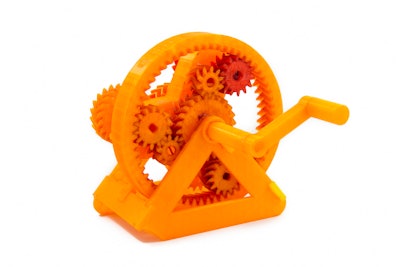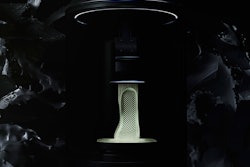
In recent years, 3D printing has exploded in manufacturing, but now that the original hype has faded, the industry is turning its attention to using the technology for scale. There are unique roles and benefits that 3D printing can play in manufacturing, and the industry is now undergoing a shift where additive manufacturing aligns with accelerated development cycles, customization demands and the digitization of manufacturing, leaving customers keen to take advantage. The following are trends that will continue to drive the 3D-printing space forward.
The Evolution of 3D Printing
When 3D printing first emerged onto the scene, its main focus and problem to address was prototyping. Now, from this historical use and adoption, manufacturers recognize the advantages that 3D printing offers, and mind-sets are starting to shift from single part and prototyping to leveraging additive manufacturing as a production solution. In fact, the benefits of additive reach far beyond single parts into the broader value chain, with manufacturers now considering 3D printing as an early option that gives them design freedom in end-use parts. The new challenge for engineers is when to adopt this new manufacturing method into their assemblies to eliminate costs and unnecessary materials, optimize performance and simplify the overall supply chain.
Supply Chain Modernizations
As 3D printing continues to evolve, the accompanying standards, regulations and overall supply chain must grow along with it. Already, the new breadth of products is calling for its modernization. Traditional manufacturing methods have well-understood technological processes with more universally known design considerations than additive manufacturing. One major challenge will be documenting the additive processes to hold similarly consistent standards (e.g., part dimensions, microstructure and machine applications), while accommodating the customization that draws industries in droves. The adoption of 3D printing as a solution hinges on confidence in this new supply chain. And while there is still a great deal of knowledge to gain, manufacturers can expect to see a version of the new supply chain emerging in the next few years.
Innovation of 3D Printing Economics
The evolution from prototyping into production also demands that the economics for 3D printing become more desirable for manufacturers. In the past five years alone, the level of engineering innovation in machine and materials has escalated as the industry works to remain in-step with growing manufacturing trends. Much of the discussion and efforts within additive manufacturing forums revolve around improved material properties, better prices, more efficient machinery and less cost variability. Continued investments from historical experts, along with major new entrants such as HP and GE, will be vital in continuing to drive this innovation and economic interest.
Digital Manufacturing Customization
While design complexity has been at the helm of additive’s major benefits since the beginning, it remains especially important as overall product life cycles continue to shorten and demands for customization drive faster and wider product development requirements. 3D printing plays a unique role in this effort, given the swath of options it offers manufacturers with adaptability to changes, design complexities and speed. This flexibility combined with 3D printing’s application in higher-mix parts with increasingly lower volumes per design will see early adopters. For example, expect to see the medical, aerospace and automotive industries continue to expand while even more industries gravitate to this technology.
The future of 3D printing is bright; as it continues to evolve and grow, the industry is already seeing the numerous opportunities where additive can expand to an even larger breadth of application. Contrary to what some believe, 3D printing will not be a takeover or replacement of traditional manufacturing, but rather an augmentation. As everything within the additive supply chain improves, the winning use cases will continue to improve over time, as well. While design mind-set, supply chain modernization, economics and customization are top of mind, software optimization for production design and process automation are innovations on the horizon. Manufacturers are already planning for these next feats.















![Pros To Know 2026 [color]](https://img.sdcexec.com/mindful/acbm/workspaces/default/uploads/2025/08/prostoknow-2026-color.mduFvhpgMk.png?ar=16%3A9&auto=format%2Ccompress&bg=fff&fill-color=fff&fit=fill&h=135&q=70&w=240)